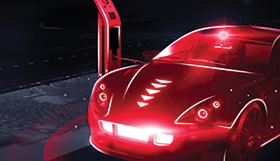

As governments and industry unite in a bid to achieve a net-zero world, manufacturers of electric vehicles (EVs) and electric vehicle supply equipment (EVSE) are moving to meet rapidly increasing demand for electrified transportation across all major economies.
The market forecast between 2019 and 2025 projects the global electric mobility market will reach $478,9 billion by 2025, increasing at a rate of 24,7% CAGR during the forecast period.
The e-mobility market is entering a critical growth phase driven largely by tightening legislation and ambitious net-zero carbon emissions targets. Forecasts project seismic shifts in the market from 2021-2024, which will ultimately determine who succeeds in the global EV and EV charging market.
There is a push to completely abolish internal combustion engines and the reliance on conventional fossil fuels. Policymakers are looking to take bold steps to meet consumers’ growing preference for environmentally-friendly vehicles. To maintain momentum and realise the full potential of e-mobility, manufacturers and standardisation, regulation, and certification bodies must now work toward harmonising standards, conformance of operational and safety parameters, and equipment interoperability.
In this whitepaper, these challenges are discussed in more detail and the question is asked: How can EV and EVSE manufacturers navigate a complex regulatory landscape and deliver a quality product, without compromising time-to-market projections?
Challenges facing the EV/EVSE market
Although the concept of electric vehicles is not a new one, the market remains in its infancy and is not well-regulated or fully operational. This presents a number of challenges for manufacturers throughout the EV and EVSE ecosystem.
Harmonising global standards
Currently, there is no single harmonised standard for EV charging, nor are there harmonised standards that ensure conformability and interoperability for new charging products entering the market. Industry goals of conformance and interoperability are challenging to achieve given the number of different standards various geographies adhere to.
Without harmonised standards, manufacturers will continue to incur significant costs associated with adapting and re-certifying their technologies to align with various regional protocols. But these protocols are important because they enable manufacturers to meet demand and penetrate new geographic markets.
By harmonising standards across borders, manufacturers can deploy their technologies faster, build the infrastructure to service the growing number of EVs sold each year, meet net-zero targets sooner, and thereby lower the purchase price of EVs and EVSE for end users.
Standardisation will not change regulation
Harmonising global regulations will standardise e-mobility technologies at an operational level, and help speed the rollout when demand is high. Thus, harmonising global regulations is a critical step in making the rollout of EVs economically viable. That said, even if the industry achieves standardisation for EV technology, different geographic regions will continue to have their own regulatory procedures for all goods entering their markets, and this is unlikely to change.
One example of this issue is the European CE mark, a self-certification process that would remain in place even if the e-mobility market harmonises its standards. Therefore, industry leaders hope that while a variety of regulatory procedures will remain in place, governments will adopt functional aspects of the main industry standards (CCS, CHAdeMO, GB/T, and ChaoJi), to enable harmonisation at a practical level.
Improve quality standards for EVSE
The EV charging market is highly diverse and awash with manufacturing newcomers that have little or no experience designing or producing charging equipment. Encouraged by the EVSE’s market growth and profit potential, many electronics companies are trying to produce EV charging technologies with varying degrees of success.
Currently, the e-mobility industry lacks formal standards for performance that are adequate enough to prevent low-quality charging equipment from entering the market. Instead, newcomers meet a set of baseline standards for the geographic region they want to sell to; these standards are not comprehensive enough to ensure a quality product.
Regulatory bodies are keen to tackle the issue with improved mandatory quality standards. However, legislative changes take time, and changes of this magnitude do not happen overnight. In the meantime, work is underway to ensure that manufacturers of charging equipment interpret and implement the existing standards correctly, in order to make charging infrastructure as a whole, more user friendly.
Improved certification processes
Regulatory associations such as the Charging Interface Initiative e.V. (CharIN e.V.), work with their members to identify holes in the certification process, and develop suitable testing standards that will promote conformance, interoperability, and improvements in product quality. While these efforts are part of an ongoing process, once enforced, manufacturers will incur fines if they go to market with charging equipment that does not meet the specified testing standards.
Stricter certification requirements will force improvements in product quality, and represent a significant step towards harmonising the technological standards that shape the e-mobility ecosystem.
Customer education
There is a distinct lack of customer education when it comes to the difficulties in using charging equipment. EVs and EVSE are new technologies, so there will be a period of adjustment for customers to fully understand how the systems work.
Simply put, in some instances, the problem of a car not charging at a specific station is an interoperability/data communication issue. In other instances, the problem might be a charger connection issue that the customer struggles to understand. Implementation guides may support EV owners and users in their self-education process, and help avoid charging failures.
Education will play a key role in the specification of charging infrastructures for large-scale projects, such as the installation of city-wide infrastructure, or the transition from internal combustion engines to EVs by public transport providers. Cost is often the deciding factor in these instances, and it frequently overrides the importance of choosing a quality charger that is compatible with the vehicles it is installed to charge.
To continue reading this whitepaper please visit https://concilium.co.za/keysight-e-mobility
| Tel: | +27 12 678 9200 |
| Email: | [email protected] |
| www: | www.concilium.co.za/test-measurement |
| Articles: | More information and articles about Concilium Technologies |

© Technews Publishing (Pty) Ltd | All Rights Reserved